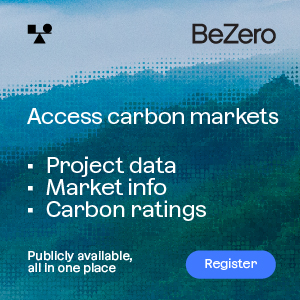A year before China hopes to launch what will eventually become the world’s biggest emissions trading scheme, officials have yet to make a series of decisions crucial to the market’s success.
The world’s biggest-emitting nation hopes to launch a national ETS late next year to help stagger its growing greenhouse gas output, although officials are increasingly leaving open the possibility that the start may be delayed to early 2017.
A delay to ensure officials get the design right makes sense, because as far as carbon markets go, it doesn’t get much bigger than this. The NDRC expects the market to cover around 4 billion tonnes of CO2e by 2020, making it twice as big as the European scheme, which is currently the world’s biggest.
In designing the market, China faces the same challenges as everyone else: collect solid data, get the emission cap and supply-demand balance right; don’t give in to special interest lobby groups; put in place a solid and credible MRV system, and so on.
But creating a government-designed multi-billion dollar environmental commodity market in China comes with its own special challenges, made even harder by the issue of how to deal with the seven pilot carbon markets that have been operating for the past two years.
In this brief we outline a few of the China-specific issues the NDRC needs to solve if it wants the national ETS to be an efficient tool in helping meet emission targets.
STRONG LEGAL BASIS
If China is to make its national carbon market work, it needs to make sure the scheme has a strong legal foundation with ample opportunity for the government to implement it, and penalise non-compliers.
That may sound obvious to the average western reader, but China has a long history of failing environmental policies because they haven’t been implemented properly where officials – especially on the regional and local level – have been given no means to enforce rules.
The fees or penalties officials have been able to dish out have been miniscule, making the rules easy to ignore for large state-owned enterprises whose top officials are often more powerful than the officials trying to enforce the law.
The pilot carbon markets have limited opportunities to impose sanctions on companies that don’t bother to surrender allowances to cover their emissions. In Tianjin, for example, the fine for non-compliance is zero because the ETS is not founded in legislation.
This is the reason most of the pilot market governments have been far more interested in ensuring near-100% compliance than in actually reducing emissions. To make sure companies comply, officials have often chose to over-allocate emitters, so that the ETS won’t impose any extra costs in a difficult economic environment.
From the limited information the NDRC has released so far, it seems the plan is to set up a market where the central government has overall responsibility for the market, but each province will draw up local allocation plans based on province-level caps set by Beijing.
An ETS law is currently being drafted, but it is yet unclear how it will look. However, unless the NDRC, with the full backing of the State Council (China’s cabinet) has the power to enforce rules and issue penalties, the market would leave itself open to the risk of some companies simply ignoring it.
TRANSPARENCY
China is generally not big on transparency, and the pilot markets have all refrained from releasing detailed data for their schemes, worrying it would make sensitive information publicly available.
Normally in an ETS, the market regulator would release information showing the facilities covered by the scheme, how many allowances they receive, how much CO2 they emit and how long/short the market is in any given year. Some of the Chinese pilot markets have released some of that information, but none has released all of it, and that has contributed to creating some of the major failures of the pilot schemes.
The main problem with the lack of information is that it leaves the market guessing as to what the demand-supply situation is, and hence the market has no chance to discover what the real price of allowances should be.
In the pilot markets, this has meant that trading started near levels informally expressed by the government as its “preferred” price level. Only just ahead of compliance have there been major market-driven price movements, but even those have been driven by pockets of short emitters in a sea of apathetic potential sellers.
The problem has been made bigger by the fact that the pilot markets don’t allow futures trading, meaning they provide no real future price signal for CO2 emissions, and hence can’t really drive clean investments. However, it looks like this will be changed in the national market.
The lack of transparency has also hurt liquidity, as few trading houses have been overly eager to join.
NDRC officials have on several occasions pinpointed the lack of transparency as a major failure in the pilot markets, but it remains to be seen how far it is willing to go to ensure the national market bucks the trend.
Not yet signed up to CP Daily? Subscribe to our free newsletter here
HOW TO MOVE FROM PILOTS TO NATIONAL MARKET?
A year ahead of the planned launch, the NDRC has yet to clarify exactly how the transition from seven non-linked pilot markets to a national scheme will happen. Six sectors will join what will be a “unified” market with common rules, but it is not at all clear if this will start out as one national market, two or three bigger regional markets, or just a bigger number of provincial schemes.
It looks certain that in 2020 there will be one national market, but companies are left guessing as to what will happen until then.
While the NDRC is busy drawing up the national market rules, the regional governments in Beijing, Hebei and Tianjin in northern China are discussing setting up a common market. The Beijing municipal government is reportedly also discussing with the governments of Inner Mongolia and Jiangsu to include some of their cities in its scheme.
Meanwhile, in the south, Guangdong and Shenzhen are discussing the possibility of linking their markets.
At the same time, a growing number of smaller cities across China, including Hangzhou and Qingdao, are announcing ETS plans of their own, although little has come of it so far.
In the end it may not matter a great deal if the market goes national from the start or through a period of regionalised trading hubs first. But for the thousands of electricity generators and manufacturers about to be included in one scheme or another, it matters a great deal to know what they are facing.
OFFSETS
The central government has made it clear that participants in the national ETS will be allowed to use a certain amount of offsets, CCERs, to meet their targets, but that’s about as much information there is for now.
Currently, the NDRC is approving projects and issuing CCERs, but it is left to each pilot market regulator to decide which units to accept. Some pilots have been very restrictive while others haven’t, which has led to a fragmented set of wildly varying CCER prices depending on their origin, and the vast majority of issued offsets ineligible in most of the markets.
The NDRC needs to make a decision on whether Beijing sets offset rules for the whole country, or if it will be left to each province, like the allocation plans.
If left to the provinces, China risks a situation where a cement producer in one province barely has access to any offsets because of stringent local rules, while its competitor in the neighbouring province has easy access to cheap credits that no one else wants.
HOW TO DEAL WITH PILOT MARKET ALLOWANCES?
Finally, a crucial decision the NDRC has yet to make is how to deal with left-over allowances from the seven pilot markets when the national ETS opens.
While information on emissions data is scarce, there is no doubt the majority of the pilots are massively over-allocated, meaning potentially millions of surplus permits will still be in the system when the pilots are due to phase-out in mid-2016 (or mid-2017, if the national ETS gets delayed).
The NDRC may choose to allow those permits into the national market, which would most likely cause outrage among emitters in regions that haven’t had a pilot market and hence haven’t had the opportunity to build up a comfy cushion of three years-worth of free surplus.
On the other hand, as warned by trading house Virtuse, if pilot market allowances are banned from the national market, the existing surplus of soon-to-be worthless permits will push the carbon price in all down pilots down towards zero, showing them off as failures.
NDRC officials have hinted that there are talks ongoing to find a conversion mechanism that would allow pilot allowances to be brought into the national market, but not on a 1:1 ratio.
Decisions, decisions.
By Stian Reklev – stian@carbon-pulse.com



